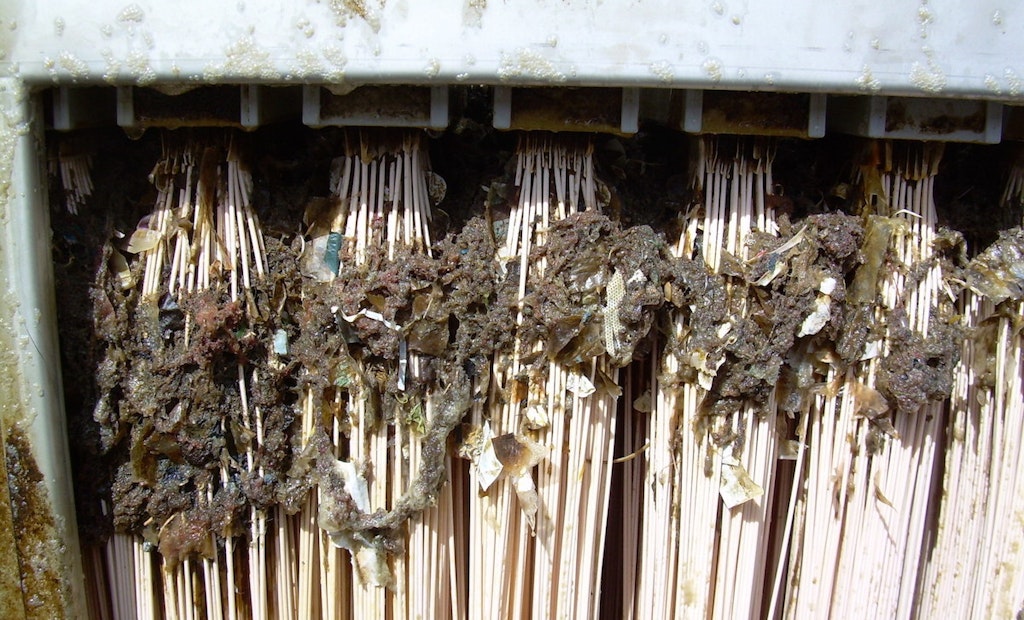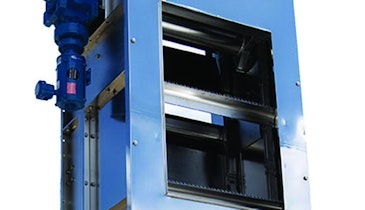Interested in Dewatering/Biosolids?
Get Dewatering/Biosolids articles, news and videos right in your inbox! Sign up now.
Dewatering/Biosolids + Get AlertsToward the end of the 1980s, Professor Kazuo Yamamoto from Tokyo University gave a lecture to a skeptical crowd. His topic? Immersed hollow fiber membrane bioreactors. Since the day that first audience listened to the possibilities of MBRs, much work has been done to make membrane bioreactors a common step in the wastewater treatment process.
While the benefits of MBR are now clear to many — high-quality effluent, a smaller footprint than traditional activated sludge processes, the potential for better biotreatment — the pretreatment steps are not always as clear. To maximize the success of MBR treatment, however, pretreatment should be a top priority.
A case for pretreatment
When even the smallest solid or bit of debris slips through, the MBR process can be compromised. Operators can attest to the incredible challenges of operating an MBR when debris accumulates between the membrane sheets or fibers. Nothing better illustrates the need for pretreatment than the numbers on how quickly one piece of hair can disrupt your system. Studies have shown that 1 ppm of debris can quickly become 8.35 pounds per million gallons, which adds up to 249 pounds a month.
The benefits of MBRs are only possible when the proper pretreatment is put in place. Unprotected MBRs will often require fouling control and membrane cleaning and replacement, all of which result in increased operating costs. Without pretreatment, the benefits of MBRs are quickly overshadowed. Installing a screening system as pretreatment will ensure that the benefits of your membrane bioreactor shine through.
Screening
Placing a screen upstream of a membrane bioreactor is as significant to the treatment process as the MBR itself. Screening protects the membrane from all manner of damage, such as clogs formed from loose hair and fiber that slip through, or debilitating damage inflicted by sharp particles. It serves as a crucial component of the MBR system.
A number of screen designs can be used to protect membrane bioreactors, including rotary drum screens and band screens. The key is to ensure the screen is designed for the types of debris it will encounter and is sized correctly for the influent.
Evolution of MBR pretreatment
In the early days of pretreatment for MBRs, a 3 to 6 mm opening size on the screening media was deemed to be an adequate level of protection. Since then, there have been shifts in both the understanding of MBR pretreatment needs, as well as changes in the influent in waste streams. In recent years many facilities have seen fiber content increase with the popularity of disposable personal hygiene products like wipes. This change in the makeup of typical sewage, along with the experience that the industry has gained over years of operating the technology, is showing that finer screening — in the range of 2 mm or less — is a must.
Reaching the necessary level of fine screening is not typically achieved in just one step. It is common to have multistep screening to accomplish the task. For combined sewer applications some form of coarse screening (greater than 6 mm) is frequently utilized to remove large solids. Even dedicated sanitary sewer flows employ 3 to 6 mm fine screens as the first line of defense to prevent over-loading, or blinding, a much finer screen.
A properly sized and designed pretreatment strategy will contribute to fewer cleanings, a better capture rate and improved operations. Fine screens of 2 mm or less are recommended for pretreatment of MBRs, but ultrafine screens are preferable to ensure a higher solids capture rate. Ultrafine screens of 1 mm are better suited to truly protect your MBR system from even the smallest piece of fiber or hair.
Protecting all flows
It is not just the main process flows that be considered when conceiving a pretreatment strategy. Experienced plant designers and operators have also learned that they must consider fugitive fiber and debris sources when building out their designs.
Washdown and filter backflushing is some of the more common sources of fugitive debris that, if left unchecked, can foul an MBR. Designers must also look at the potential for less frequent incidents like system repair work or overflow events that can create problems for the systems. All such fugitive debris sources must be reintroduced into the process prior to the pretreatment screening.
The advanced technology of membrane bioreactors also calls for progressive protection of these systems. Pretreatment is imperative to the MBR process and designers must consider a multitude of operational situations when building their pretreatment strategy. Just as we’ve advanced and improved our knowledge of membrane bioreactor technology since its early days on the market, we’ve come to recognize the true power of protection in the process.
For more information on MBRs and other processes, visit www.jwce.com.







